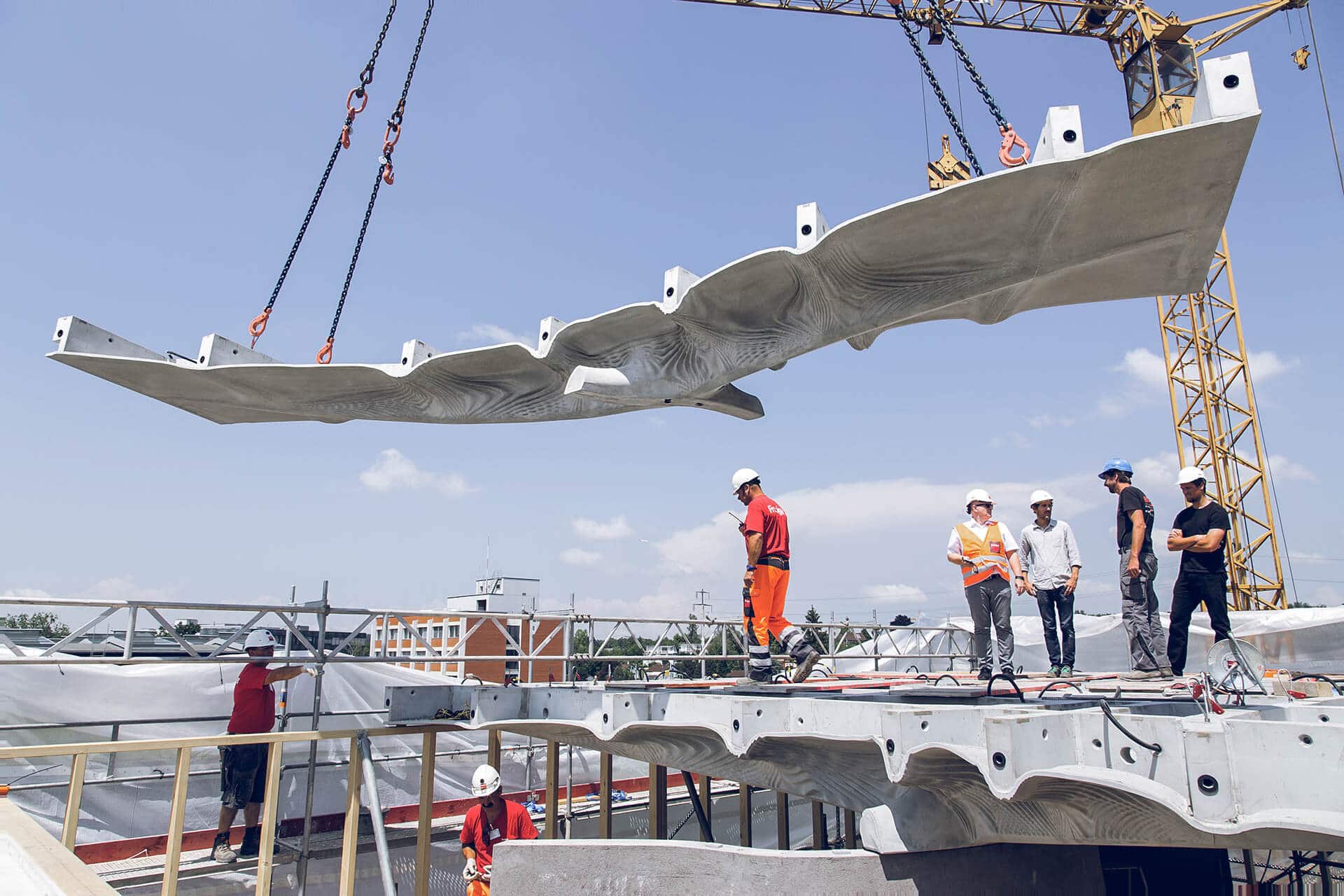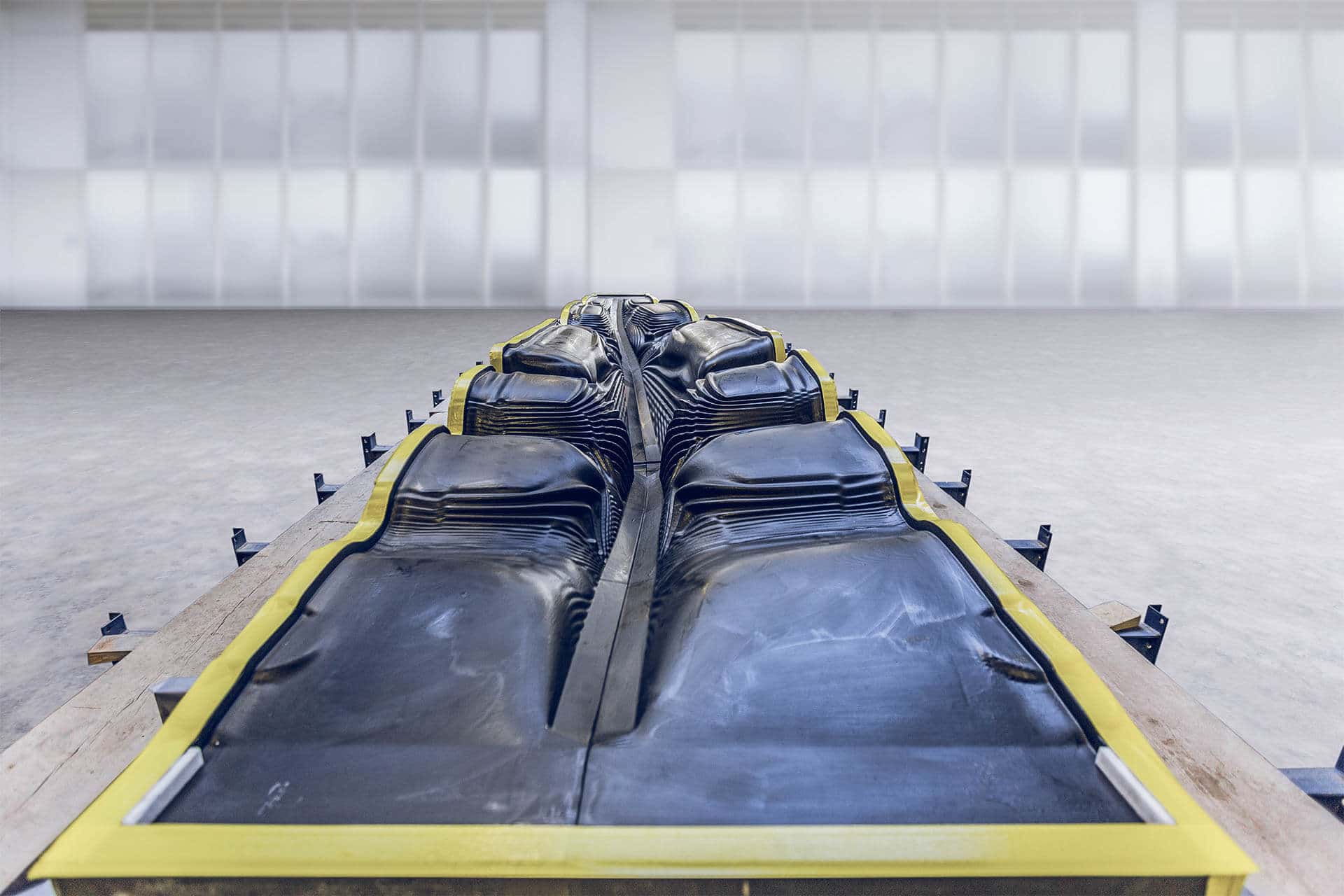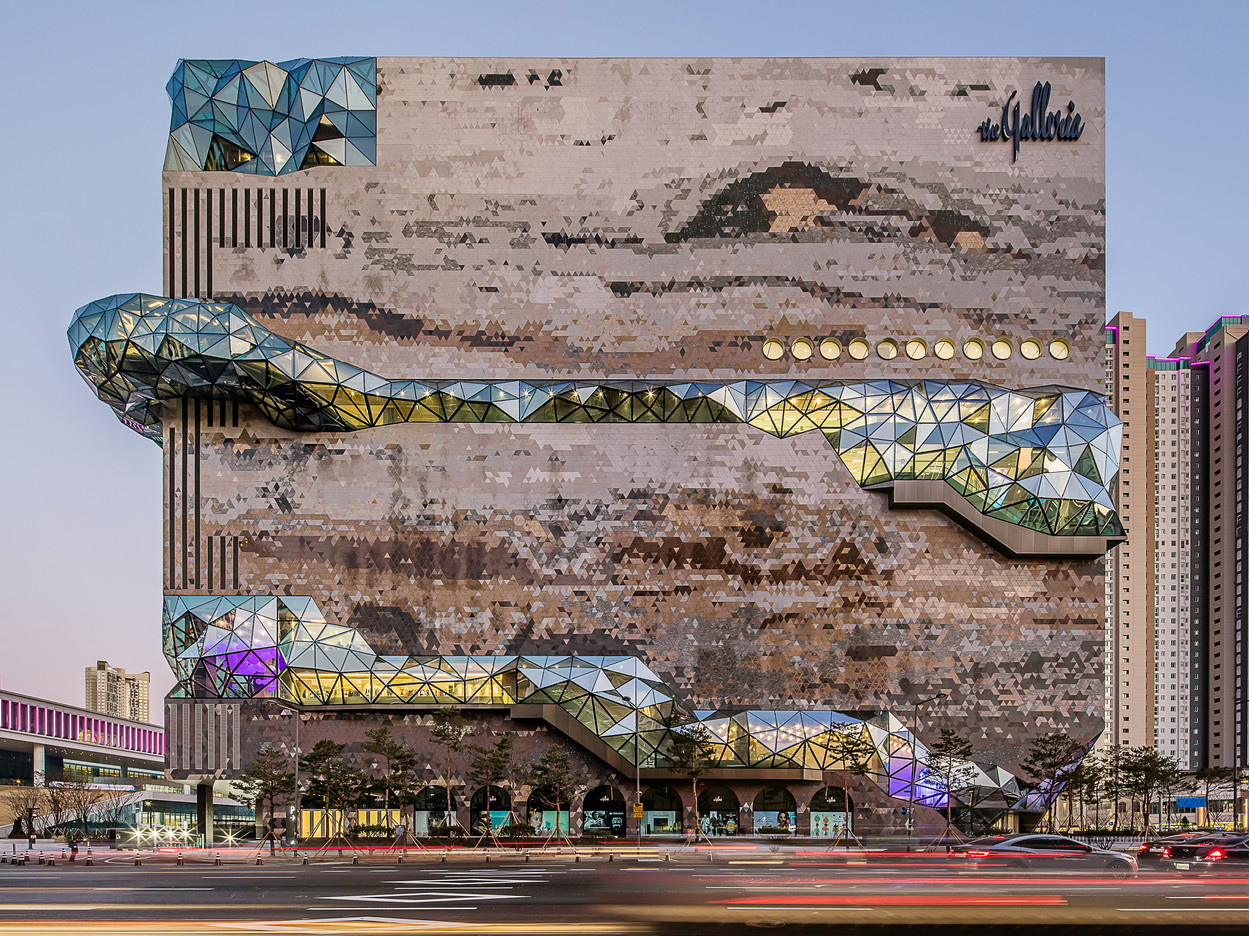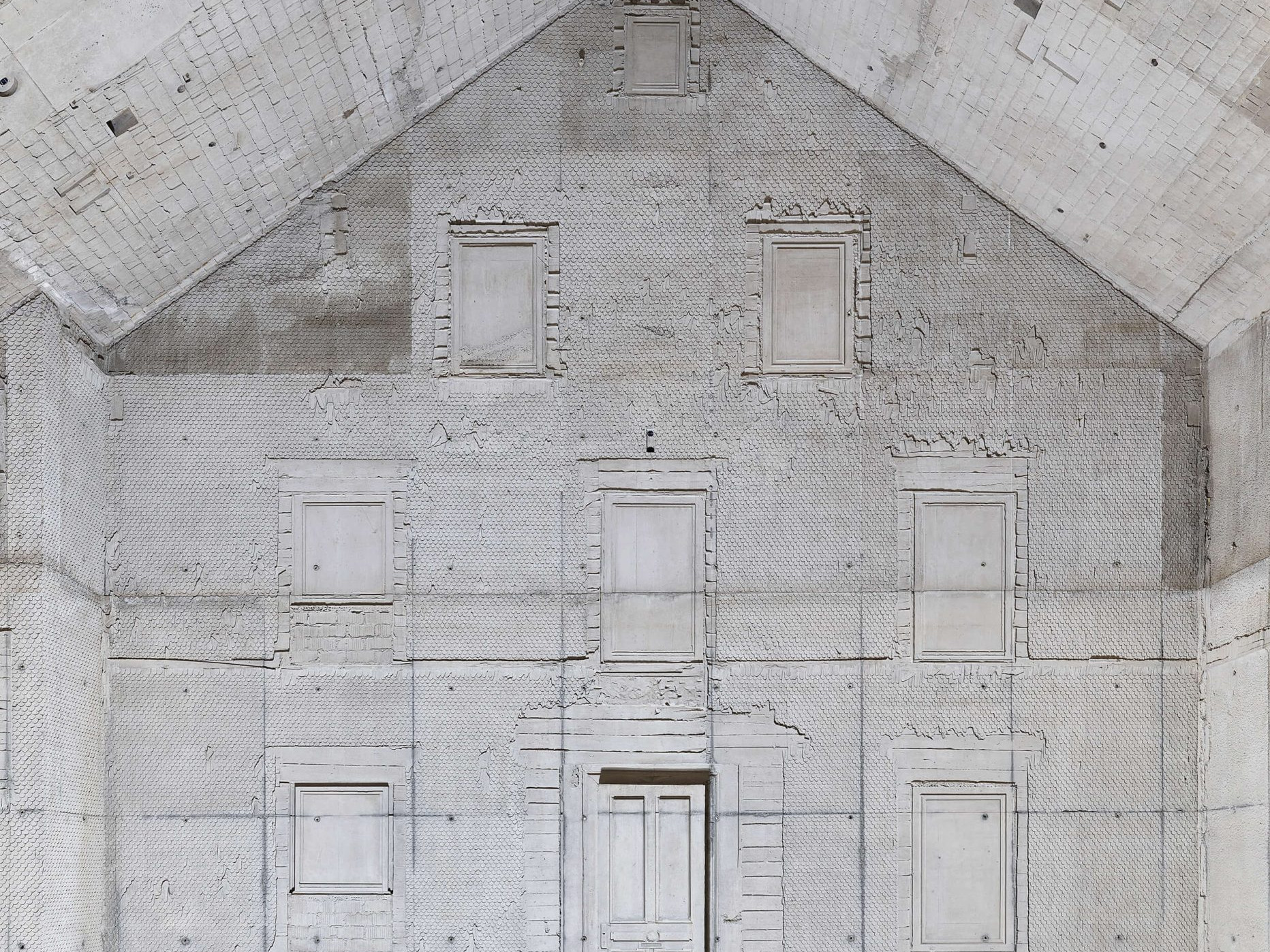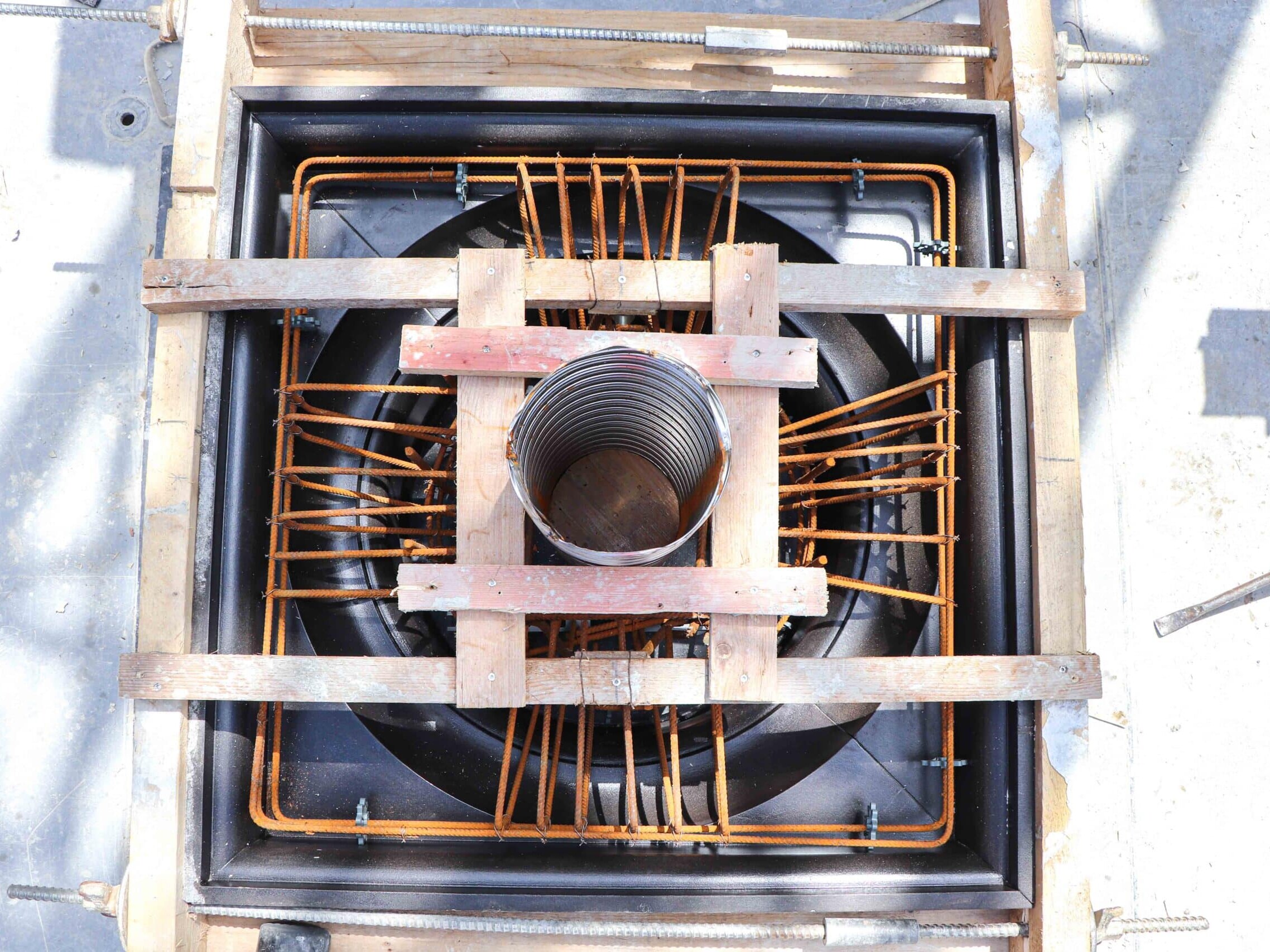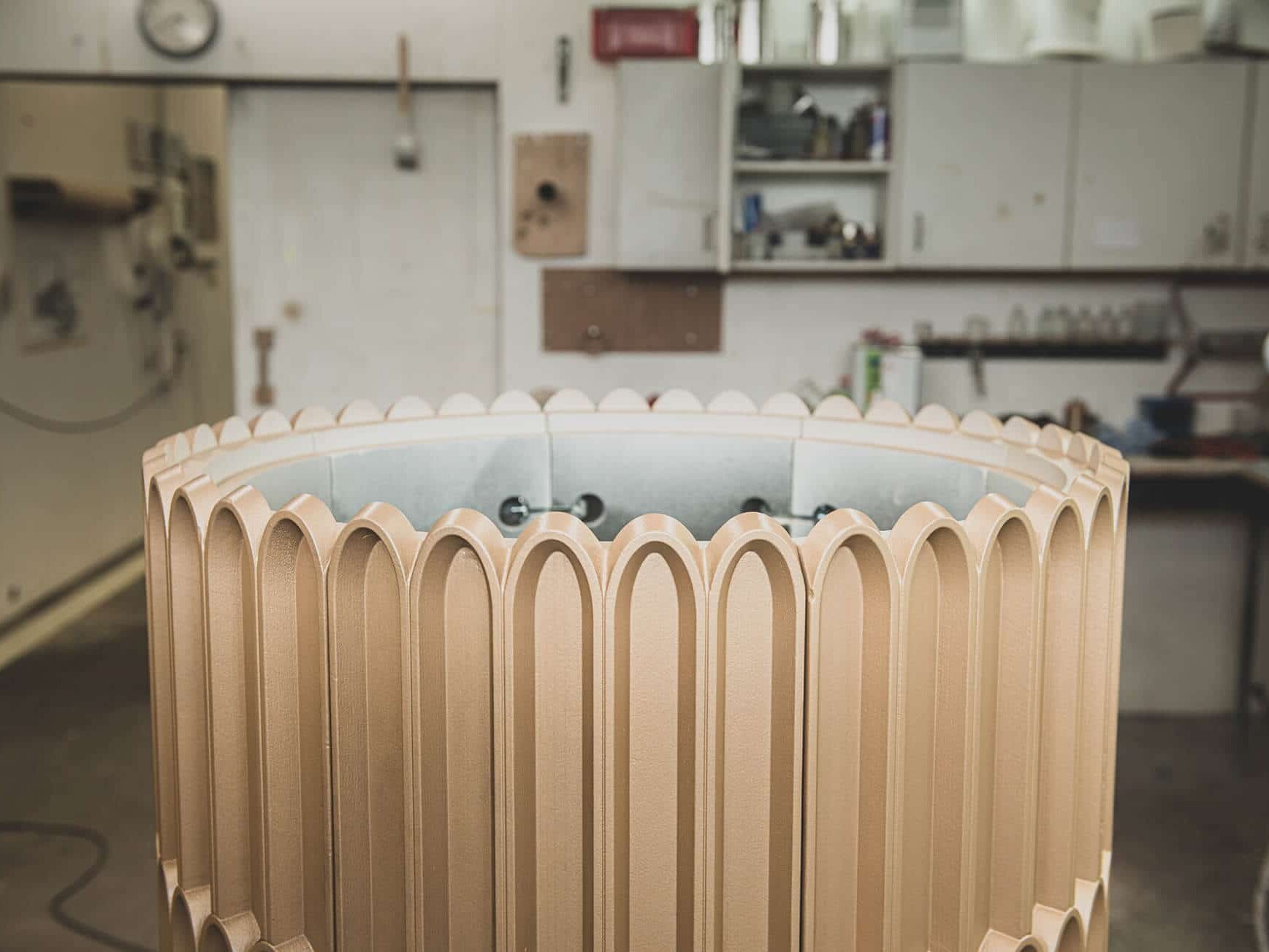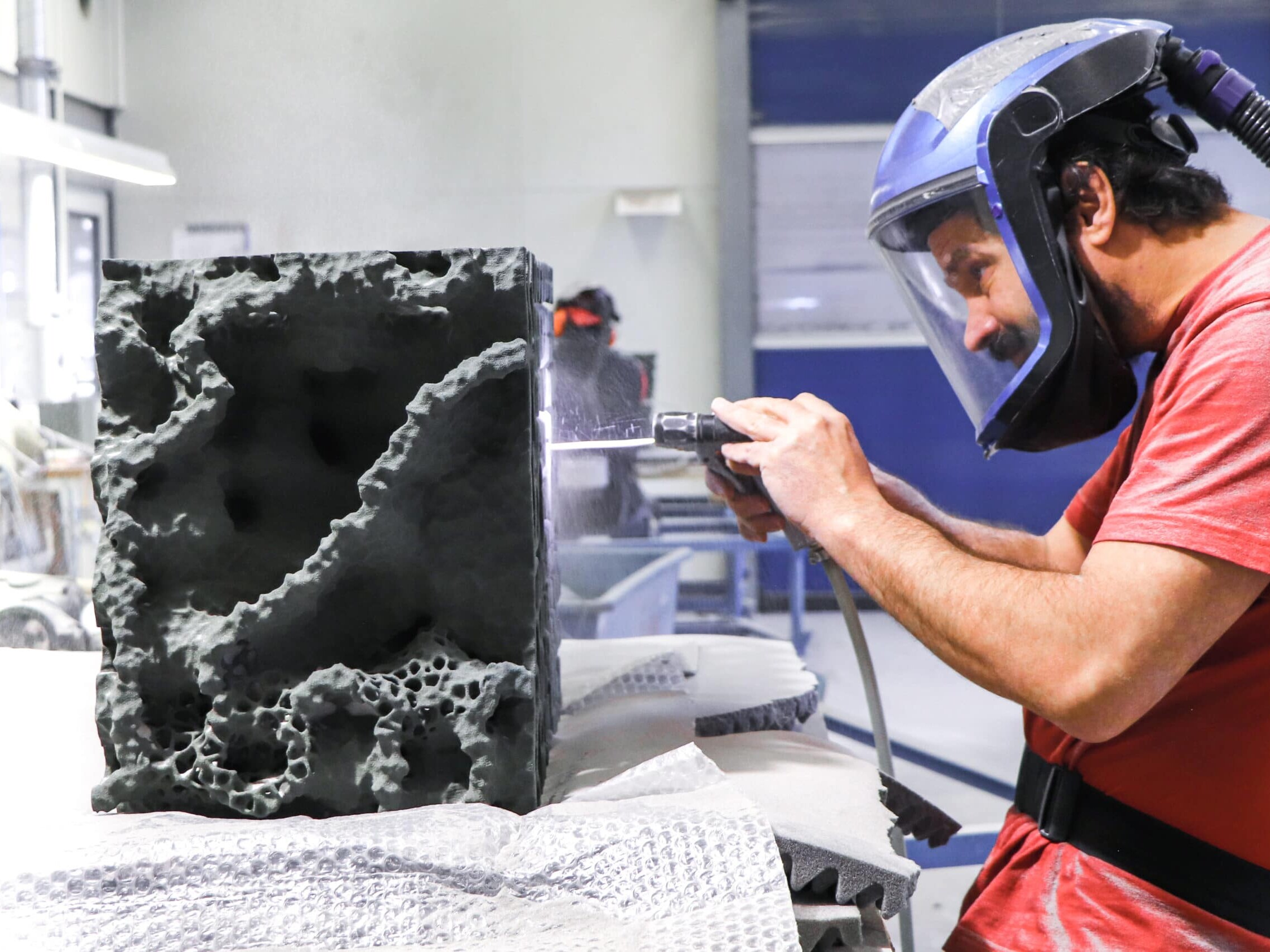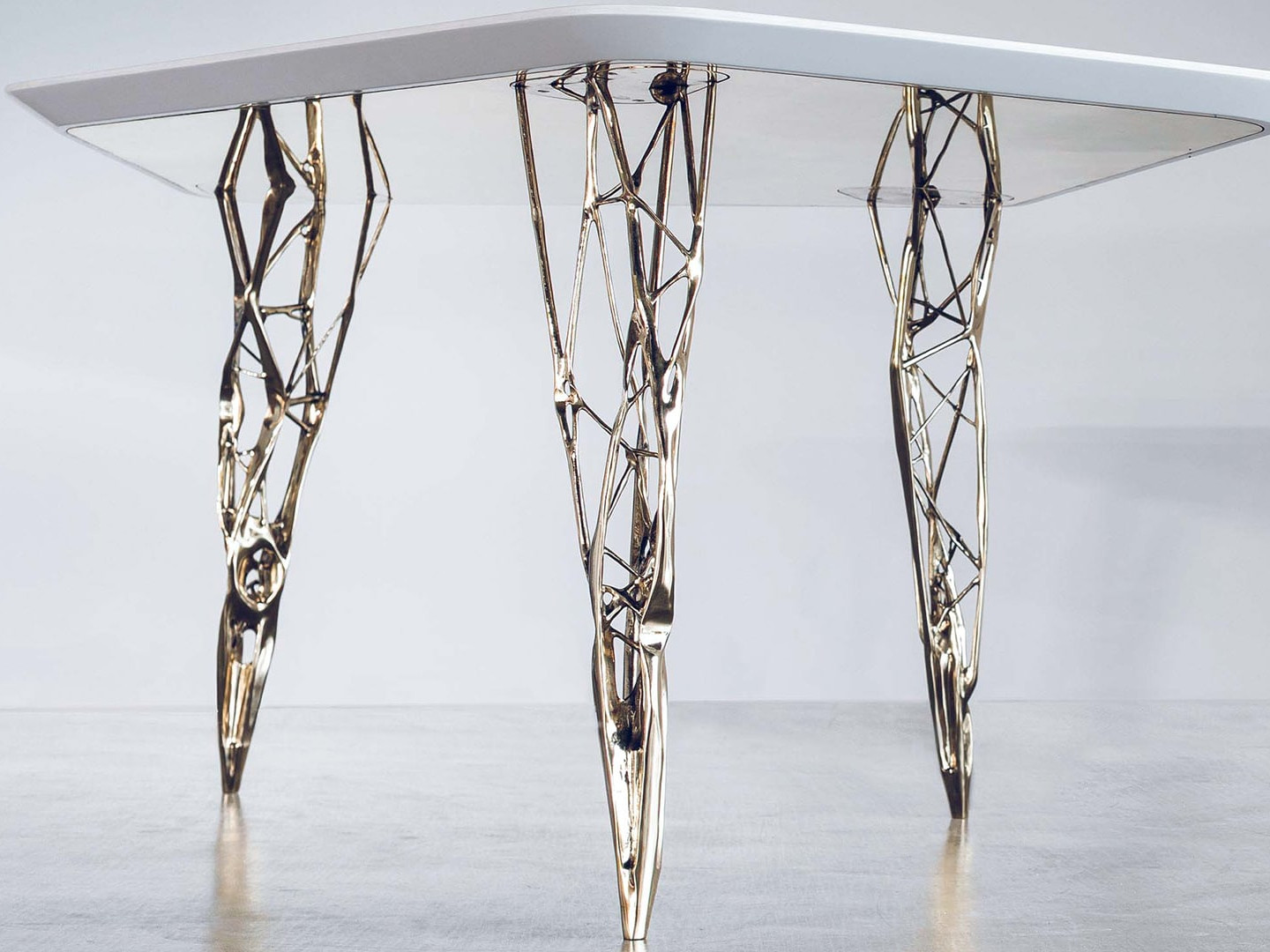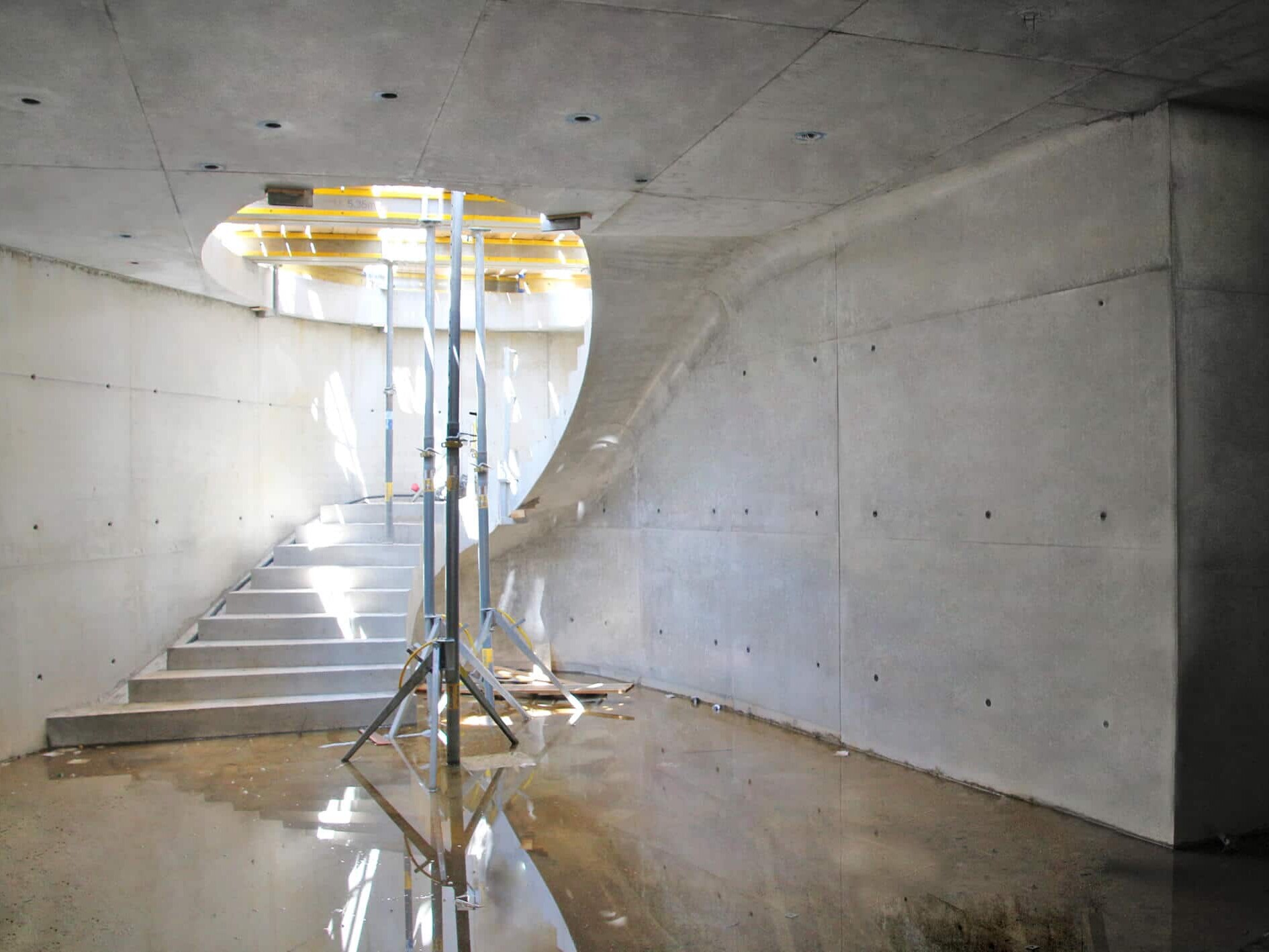- Home
- Case Studies
- Architecture
- Intelligent 3D printed concrete formwork
The advantages of 3Dprinting of formworkare proven once again
voxeljet AG prints complex molds for “intelligent” concrete ceiling at DFAB (NEST). Using 3D printing, voxeljet AG created the highly-complex formwork for the research project DFAB House (digitally-manufactured house) in the NEST project (Next Evolution in Sustainable Building Technologies) of the EMPA (Swiss Federal Laboratories for Materials Science and Technology).
This involved a 78 m2 lightweight concrete slab as a structurally-optimised and functionally-integrated ceiling slab with a performative complex design. 3D printing using the Powder-Binder-Jetting process once again proved valuable in such a Project.
At NEST in Zurich, voxeljet has once again proven how useful 3D printing is for the creation of highly-complex formworks. For the DFAB House project (digitally-manufactured house), a research project from ETH Zurich as part of the Digital Fabrication Swiss National Centre of Competence in Research (NCCR DFAB), 136 formwork elements were created using the Powder-Binder-Jetting process. The specific process used was the Furan-Direct-Binding (FDB) process from voxeljet. A 3d printing technology in which silica sand layers are selectively bound together with an organic binder (furan resin) through polymerisation.
We are facing a worldwide increasing building activity, while our material resources are limited.By 3D-printing the formwork for concrete casting, we can combine the advantages of additive manufacturing for the creation of highly complex geometries with the excellent structural capacities of concrete.This allows us to optimize the form of concrete elements and hence use the material more efficiently.
Prof. Benjamin DillenburgerProfessor of Digital Building Technologies at ETH Zurich
3D printing saves time, material and money
The intelligent slab is one of the core elements of the DFAB House, which is designed, planned and built in the NEST of the EMPA by the research group Digital Building Technologies (DBT) at ETH Zurich under the direction of Prof. Dr. Benjamin Dillenburger. The formwork system for this large-scale project was designed by the team of DBT. The objective of the project was, to demonstrate how 3D printing, based on optimised CAD data, can save resources on construction sites. Compared to columns, slabs require much more concrete – actually up to 80% of the total weight of a building can be accounted to slabs only. The saving potential is correspondingly significant.
And the objective was achieved: At the DFAB House, the slab has been realized only as heavy as statically required at each point. Therefore, over 60% of concrete have been saved, compared to conventional construction methods. 3D printing using the Powder-Binder-Jetting process was the ideal solution for these highly-complex and three-dimensional curved formwork elements. “Smart Slab” is intended to help the construction industry to build more compact and material-saving structures in the future, as additional functions such as lamp sockets, drill holes or openings for sprinkler systems can already be integrated in the data set for 3D printing.
Through a parametric model, adjustments can be made at any time, without additional costs. If a three-dimensional shape is changed, the 3D data and the 3D printing can be easily adjusted. This allowed us to adapt the geometry of the slab exactly to the 3D scan of the load-bearing wall. In addition, very complex geometries can now be produced, which were previously not achievable.
Dr. Mania Aghaei Meibodi, Project manager
With the VX4000 from voxeljet – the world’s largest 3D printing system for sand molds – formwork elements of 4.00 x 2.00 x 1.00 m can be printed. When post-processed accordingly, each of these elements can withstand concrete casting pressures of 100 kN/m². The 136 elements printed by voxeljet for the DFAB House had a total volume of over 6,000 litres. The largest element had a volume of approx. 70 litres.
The 3D-printed elements were prefabricated by voxeljet and infiltrated with polyester resin by the ETH Zurich. Subsequently, the elements were assembled into 7 meter long formwork for the slab elements and coated with a release-agent. Prior to the actual concrete casting, a thin layer of fibre-reinforced shotcrete was applied. Finally, a laser-cut timber formwork was used for the struts and the concrete cast. Therefore, immediately after stripping, the finished elements were transported directly to the construction site and assembled there.
Conclusion: 3D printing using Powder-Binder-Jetting saves time, material and money. In the long term, the use of 3D-printed formworks will revolutionize concrete construction in a wide range of applications (formworks, formwork skins, facades, etc) and provide companies a decisive market advantage with novel designs never seen before.
What is Powder-Binder-Jetting?
Powder-Binder-Jetting is an additive manufacturing process, which uses particle material, such as sand or plastic. voxeljet 3d printing systems apply thin layers (150-300 µm) of the powder material to a building platform with the so-called recoater. Subsequently, a high-performance print head applies a binder wherever the desired component is to be built. This selectively bonds the material to form the part. Then the building platform is lowered by one layer thickness and powder and binder are applied again. This process is repeated until the desired component is complete. The only prerequisite for 3D printing: Printable 3D data must be available. Afterwards, 3D-printed formworks can be used in the same way as conventional concrete formworks.
3D printing for architecture
voxeljet offers various 3D-printing applications for the architecture and construction industry. These include: the printing of detailed and extremely realistic architectural models for a perfect and accurate impression of future buildings. In addition, 3D-printed replications can be used as exact models for sculpting or the preservation of historical monuments. One of the most innovative applications is the 3D printing of 21 mm thick formwork skins for concrete casting which can be combined with traditional wooden formwork. Digital data from the CAD model is used as the input. voxeljet is one of the world’s leading companies offering this process.
More Case Studies
3D printing for structural elements in architecture
For the unique facade of the Galleria Gwanggyo in South Korea, 3D printing and investment casting was employed to create hundreds of individual joint knots for the glass walk.
3D printing and formwork construction in perfection. For a museum in the Black Forest, voxeljet sets new standards for additive manufacturing in architecture.
For an office building near Munich, Deutsche Doka once again used 3D printed formwork elements from voxeljet for concrete casting.
SL Rasch GmbH counts on 3D printing for the visualization of architectural projects.
Functional Architecture with 3D Printing
The Mersitem Wall is a best practice example of how functional and sustainable architecture can be created with 3D printing.
3D printing for sustainable architecture
Singapore's AIRLAB uses these table legs to show how architecture can be made more sustainable and functional at the same time.
3D printing makes complex concrete formwork more efficient
A first-class reference: Doka uses voxeljet for the creation of complex formworks
Industrial 3D Printing Systems
Our portfolio of industrial 3D printers ranges from compact systems for research to additive mass production.



















